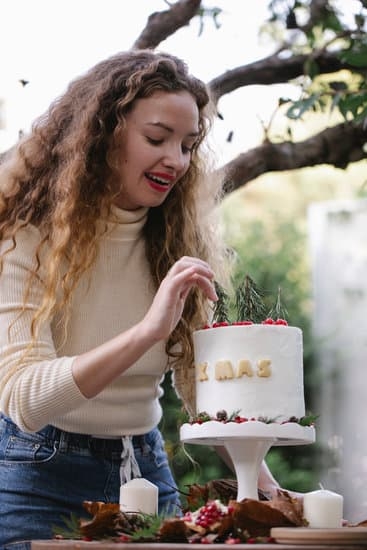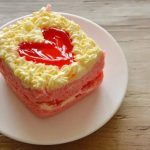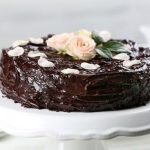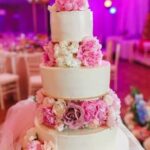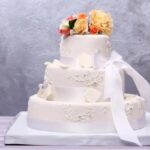Buttercream frosting is a versatile and essential component in the world of cake decorating. Whether you’re looking to create intricate designs or simply frost a delicious treat, buttercream frosting is a go-to choice for many bakers and decorators.
This smooth and creamy mixture not only adds sweetness to your cakes but also acts as an adhesive for fondant decorations and other edible embellishments. When it comes to creating visually stunning confections, mastering the art of buttercream frosting is key.
There are different types of buttercream frosting that can be used in cake decorating, each with its own unique characteristics and flavor profiles. From the classic American buttercream with its rich sweetness to the delicate Swiss meringue buttercream and the luxurious Italian buttercream, there is a type of buttercream frosting to suit every baker’s preference.
The choice of buttercream can significantly impact the overall look and taste of your decorated cakes, making it important to select the right type for your specific needs.
To make the perfect buttercream frosting, you’ll need a few basic ingredients such as butter, sugar, and flavorings. By combining these simple components in the right proportions, you can create a smooth and creamy base that can be easily manipulated for decorating purposes.
From vanilla and chocolate to more exotic flavors like coffee or citrus, the possibilities for customizing your buttercream frosting are endless. In the following sections, we will delve into detailed recipes, tips, flavor variations, decorating techniques, and troubleshooting tips to help you master the art of working with this delectable icing.
Types of Buttercream Frosting
When it comes to cake decorating, choosing the right type of buttercream frosting can make all the difference in both taste and aesthetics. Three popular types of buttercream frosting that are commonly used in cake decorating are American buttercream, Swiss meringue buttercream, and Italian buttercream. Each type has its own unique texture, flavor profile, and ingredients.
American buttercream is perhaps the most straightforward and commonly used type of buttercream frosting. It is made using a simple combination of butter, powdered sugar, vanilla extract, and milk or cream. This type of frosting tends to be very sweet and rich in flavor, making it ideal for classic birthday cakes or cupcakes.
Swiss meringue buttercream is a more delicate and light option compared to American buttercream. It is made by heating egg whites and sugar over a double boiler until the sugar dissolves completely, then whipping the mixture into stiff peaks before adding softened butter. The result is a silky smooth frosting that is less sweet but incredibly luxurious in texture.
Italian buttercream is another popular choice for cake decorators who prefer a smooth and stable frosting. To make Italian buttercream, a hot sugar syrup is poured over whipped egg whites until they cool down completely before adding softened butter. This results in a velvety smooth frosting that is less sweet than American buttercream but still rich in flavor.
| Buttercream Type | Characteristics |
|---|---|
| American Buttercream | Simple to make with a rich and sweet flavor profile. |
| Swiss Meringue Buttercream | Lighter texture with a less sweet taste compared to American buttercream. |
| Italian Buttercream | Smooth and stable frosting with a rich flavor profile. |
Each type of buttercream frosting has its own unique characteristics that cater to different preferences and needs when it comes to cake decorating. Experimenting with these various options can help you find the perfect fit for your next baking project.
Ingredients for Buttercream Frosting
Buttercream frosting is a versatile and delicious topping that is essential for cake decorating. It adds flavor, richness, and a smooth texture to any cake, making it a popular choice among bakers and decorators. Understanding the basic ingredients needed to make buttercream frosting is crucial in creating the perfect consistency and taste for your cakes.
The main ingredients required to make buttercream frosting include butter, sugar, and flavorings. Butter serves as the base of the frosting, providing a rich and creamy texture. It is important to use unsalted butter at room temperature to achieve the ideal consistency. Sugar is added to sweeten the frosting and give it structure. Confectioners’ sugar, also known as powdered sugar, is commonly used in buttercream recipes for a smoother finish.
In addition to butter and sugar, flavorings play a key role in enhancing the taste of buttercream frosting. Vanilla extract is a classic choice for adding a hint of sweetness and aroma to the frosting. Other flavor options include almond extract, citrus zest, or even coffee extract for more unique variations. Experimenting with different flavor combinations can elevate your buttercream frosting and make it stand out on your decorated cakes.
| Ingredient | Role |
|---|---|
| Butter | Base ingredient for richness and creaminess |
| Sugar | Provides sweetness and structure |
| Vanilla extract | Adds flavor and aroma |
Step-by-Step Recipe for Making Buttercream Frosting
Gather Your Ingredients
To start making your buttercream frosting for cake decorating, you will need the following ingredients: 1 cup unsalted butter (at room temperature), 4 cups powdered sugar, 2 teaspoons vanilla extract, and 2-4 tablespoons of heavy cream or milk. You can also add a pinch of salt for flavor enhancement.
Mixing the Butter and Sugar
In a mixing bowl, beat the softened butter on medium speed until it is smooth and creamy. Slowly add in the powdered sugar, 1 cup at a time, continuing to mix on low speed until all the sugar is incorporated. Scrape down the sides of the bowl as needed to ensure all ingredients are well combined.
Adding Flavor and Consistency
Once the butter and sugar are fully mixed, add in the vanilla extract for flavor. To achieve your desired consistency, slowly pour in the heavy cream or milk while mixing on low speed. Add more cream if you prefer a softer frosting or less for a stiffer consistency. Continue to mix on medium-high speed until the frosting is light and fluffy.
By following these steps, you can create a delicious and versatile buttercream frosting for cake decorating that will elevate any baked creation. Whether you are piping intricate designs onto cupcakes or spreading a smooth layer over a layered cake, this recipe will provide you with the perfect canvas for your creativity. Enjoy experimenting with different flavors and colors to customize your buttercream frosting to suit any occasion.
Tips and Tricks for Working With Buttercream Frosting
Achieving the Perfect Consistency
One of the key factors in working with buttercream frosting is achieving the right consistency. To ensure your frosting is easy to work with, you can adjust the thickness by adding more powdered sugar for a stiffer consistency or a small amount of milk or cream for a lighter, smoother texture. It’s essential to gradually add these ingredients while mixing to avoid over-thickening or thinning out the frosting too much.
Coloring Buttercream Frosting
When it comes to coloring buttercream frosting, gel food coloring is preferred over liquid food coloring as it provides more vibrant colors without affecting the consistency of the frosting. Start by adding a small amount of coloring and mix well before adding more until you achieve the desired shade. Remember that colors may deepen over time, so it’s best to start with a lighter hue and adjust accordingly.
Texture and Flavor Enhancements
To enhance the texture and flavor of your buttercream frosting, consider incorporating additional ingredients such as cream cheese for a tangy twist, cocoa powder for chocolate flavor, or fruit purees for a fruity undertone. Experiment with different extracts like vanilla, almond, or mint to create unique and delicious variations. Be mindful of how additional ingredients may affect the consistency and adjust accordingly to maintain the ideal texture for cake decorating.
By mastering these tips and tricks for working with buttercream frosting, you’ll be well-equipped to create beautifully decorated cakes that not only look stunning but taste absolutely delicious as well. Remember that practice makes perfect, so don’t be afraid to experiment and have fun exploring different techniques and flavor combinations to elevate your cake decorating skills using buttercream frosting.
Flavor Variations for Buttercream Frosting
When it comes to buttercream frosting for cake decorating, the possibilities are endless, especially when it comes to flavor variations. Adding different flavors to your buttercream can elevate the taste of your cakes and create unique and delicious combinations. Here are some popular flavor options to consider experimenting with:
- Chocolate Buttercream: To make chocolate buttercream frosting, simply add cocoa powder or melted chocolate to your basic buttercream recipe. This rich and decadent frosting is perfect for chocolate lovers and pairs well with chocolate cakes.
- Strawberry Buttercream: For a fruity twist, incorporate strawberry puree or extract into your buttercream frosting. This light and refreshing flavor is ideal for spring and summer cakes, adding a pop of color and taste.
- Lemon Buttercream: The zesty tang of lemon can brighten up any cake. Simply mix fresh lemon zest or lemon juice into your buttercream frosting for a tangy and vibrant flavor that complements vanilla or citrus-flavored cakes.
Experimenting with different flavors in your buttercream frosting allows you to customize each cake creation to suit specific preferences or themes. Whether you’re looking for something rich and indulgent like chocolate, fruity and refreshing like strawberry, or zesty and bright like lemon, there’s a flavor variation out there to suit every taste bud. Don’t be afraid to get creative in the kitchen and try out new combinations to discover your favorite flavor profile for buttercream frosting.
Incorporating these flavor variations into your buttercream frosting recipe can take your cake decorating skills to the next level. Not only do they add an extra layer of complexity to your desserts, but they also allow you to showcase your creativity and attention to detail through unique flavor pairings.
Whether you’re whipping up a batch of chocolate buttercream for a decadent birthday cake or experimenting with lemon buttercream for a refreshing summer treat, the possibilities are truly endless when it comes to creating delicious cakes with flavorful frostings.
Cake Decorating Techniques With Buttercream Frosting
When it comes to cake decorating, buttercream frosting is a versatile and popular choice due to its smooth texture and ability to hold intricate designs. One of the most common cake decorating techniques using buttercream frosting is piping.
Piping allows you to create beautiful borders, flowers, and other intricate designs on your cakes. To master piping with buttercream frosting, invest in a variety of piping tips and practice different designs on a parchment paper before applying them to your actual cake.
Another essential skill in cake decorating with buttercream frosting is achieving a smooth finish on your cakes. To achieve a perfectly smooth finish, start by crumb coating your cake with a thin layer of frosting to seal in any crumbs.
Then, use an offset spatula or bench scraper to evenly spread a thicker layer of buttercream frosting on the cake’s surface. Smooth out any imperfections by gently running the spatula or scraper around the sides and top of the cake until it is completely even and smooth.
Creating textured designs with buttercream frosting adds depth and dimension to your cakes. One way to create textured designs is by using specialty piping tips such as star tips or petal tips to add unique patterns and shapes to your cakes.
You can also experiment with different techniques such as ruffles, rosettes, or basket weave patterns to create visually appealing textures on your cakes. Don’t be afraid to get creative and try out new techniques when decorating with buttercream frosting – the possibilities are endless.
- Experiment with different piping tips for various designs
- Practice achieving a smooth finish by crumb coating and smoothing out imperfections
- Create textured designs using specialty piping tips or unique techniques such as ruffles or rosettes
Troubleshooting Common Buttercream Frosting Issues
In conclusion, mastering the art of creating a perfect buttercream frosting for cake decorating can truly elevate your baking game. Whether you opt for the simplicity of American buttercream, the velvety Swiss meringue buttercream, or the luxurious Italian buttercream, understanding the basics and techniques involved in working with buttercream frosting is key to achieving stunning results.
When making buttercream frosting, ensuring that you have the right ingredients such as butter, sugar, and flavorings is crucial. Following a step-by-step recipe with precise instructions will help you achieve that smooth and creamy consistency that is ideal for cake decorating. However, it is not uncommon to encounter some common problems like a grainy texture or air bubbles when working with buttercream frosting.
To tackle these issues, it’s important to troubleshoot and understand where things might have gone wrong. Whether it’s adjusting the temperature of your ingredients, incorporating air properly during mixing, or even experimenting with different flavor variations to mask imperfections, there are solutions to every challenge you may face. With practice and patience, you’ll soon find yourself confidently creating beautiful cakes adorned with delicious and picture-perfect buttercream frosting.
Frequently Asked Questions
What Is the Best Type of Buttercream Frosting for Decorating Cakes?
The best type of buttercream frosting for decorating cakes is Swiss meringue buttercream. This type of frosting is smooth, creamy, and holds its shape well when piping intricate designs on cakes. It also has a less sweet flavor compared to American buttercream.
What Is the Formula for Buttercream Frosting?
The formula for basic buttercream frosting typically includes softened unsalted butter, powdered sugar, vanilla extract, and a bit of milk or cream to achieve the desired consistency. The key is to whip the butter until light and fluffy before gradually adding in the powdered sugar to avoid a grainy texture.
What Is the Trick to Buttercream Frosting?
The trick to achieving perfect buttercream frosting lies in making sure that your ingredients are at the right temperature. Your butter should be softened but not melted, while your liquids should be at room temperature. Additionally, be patient when mixing the ingredients together to ensure a smooth and creamy texture.

Welcome to our cake decorating blog! My name is Destiny Flores, and I am the proud owner of a cake decorating business named Cake Karma. Our mission is to provide delicious, beautiful cakes for all occasions. We specialize in creating custom cakes that are tailored specifically to each customer’s individual needs and tastes.

